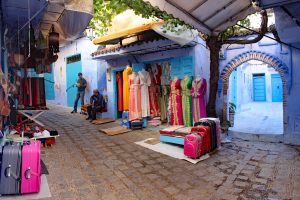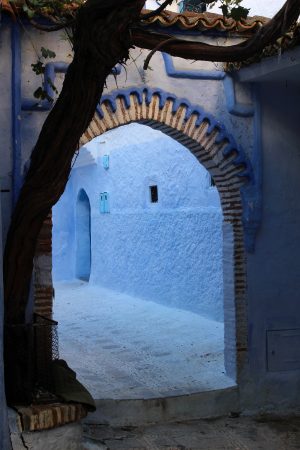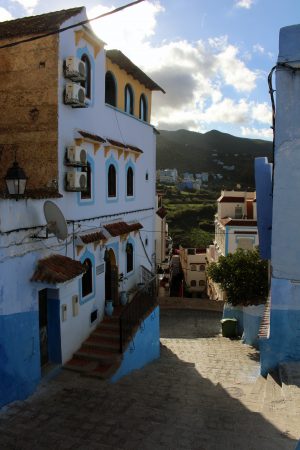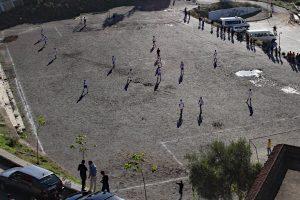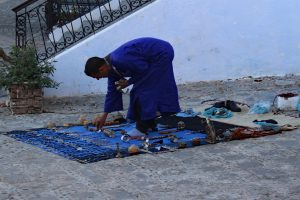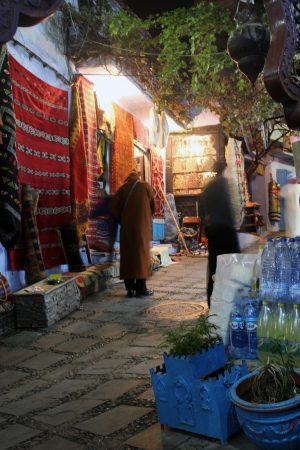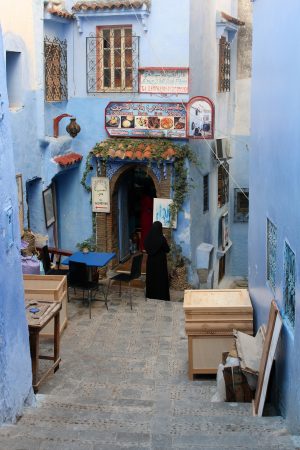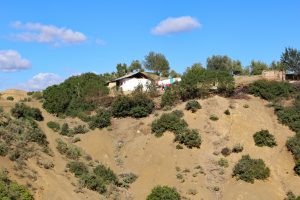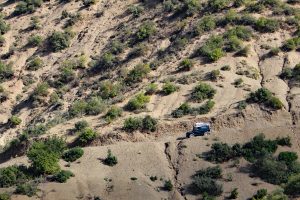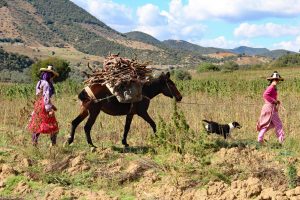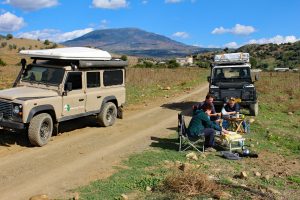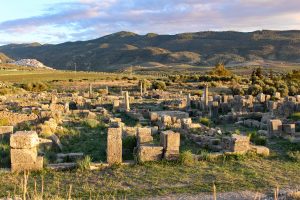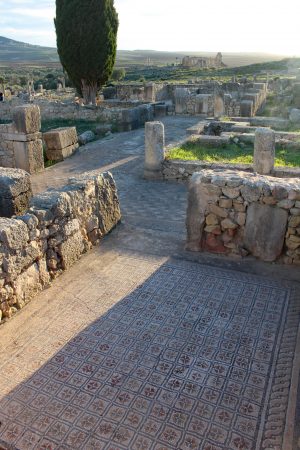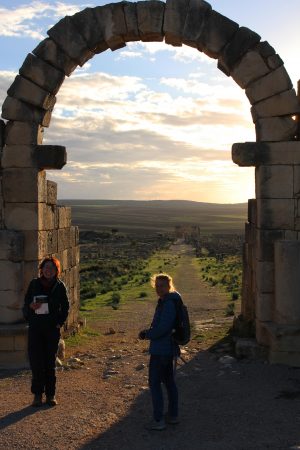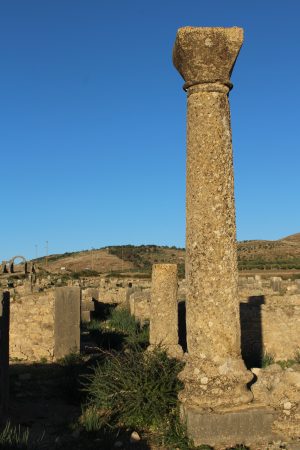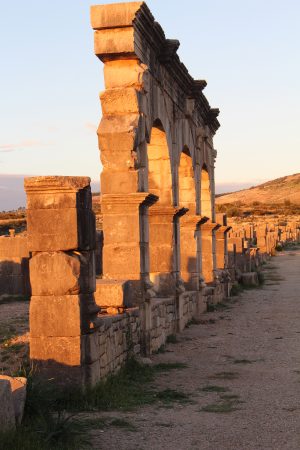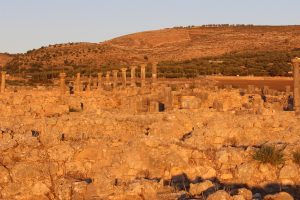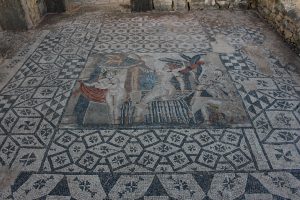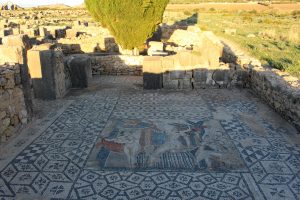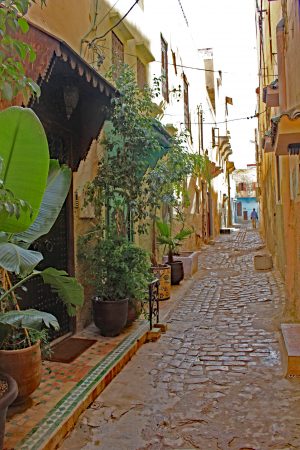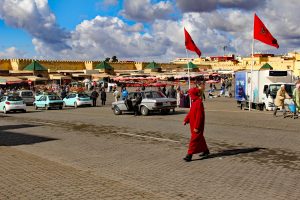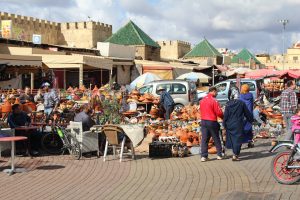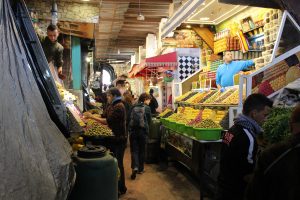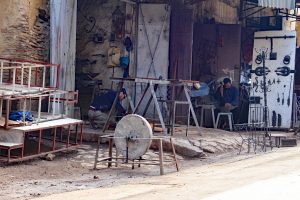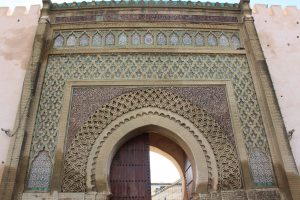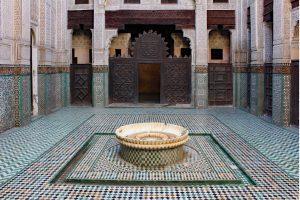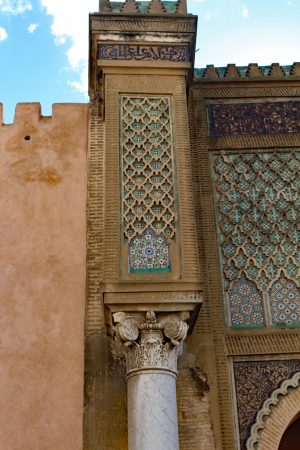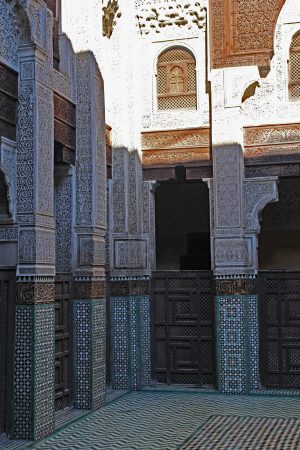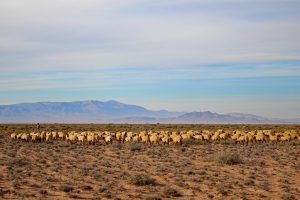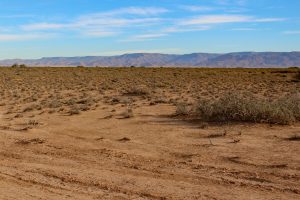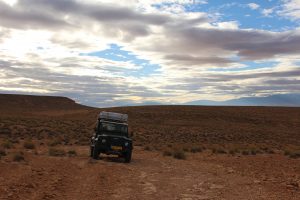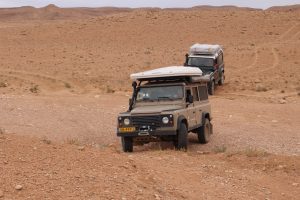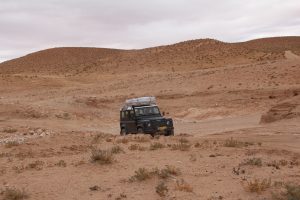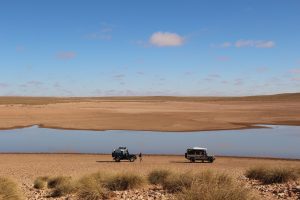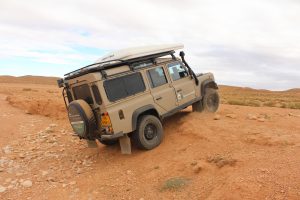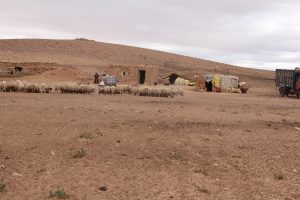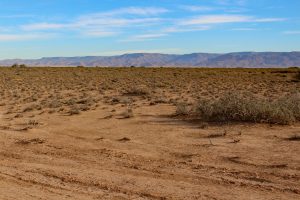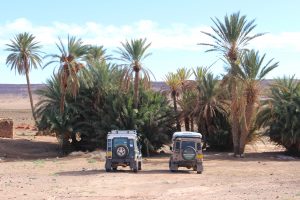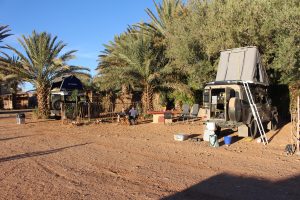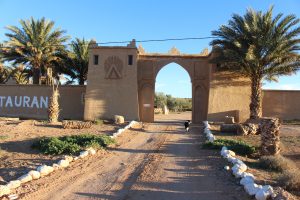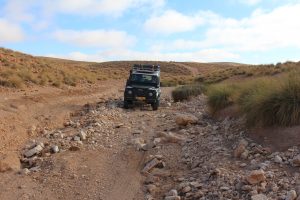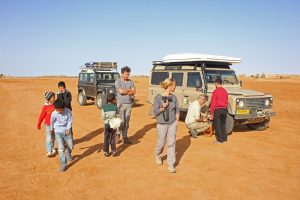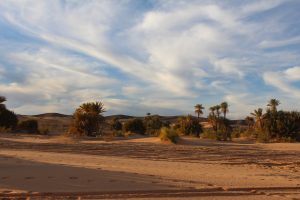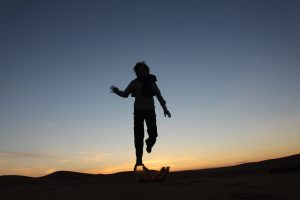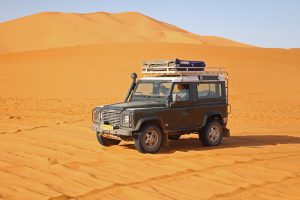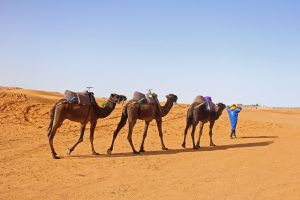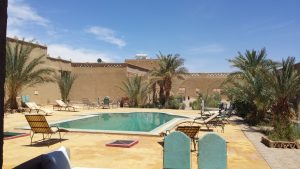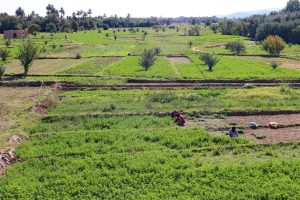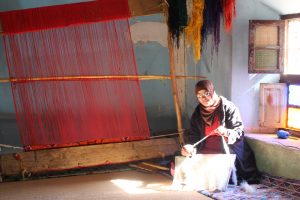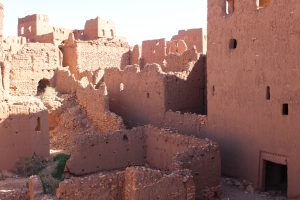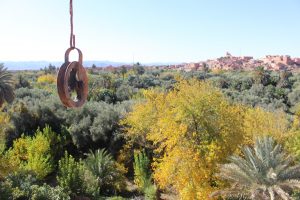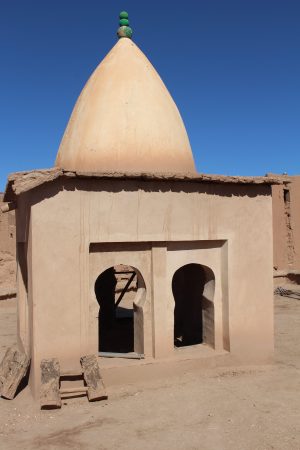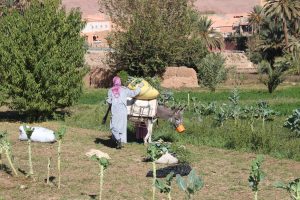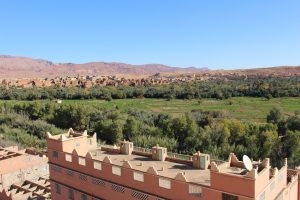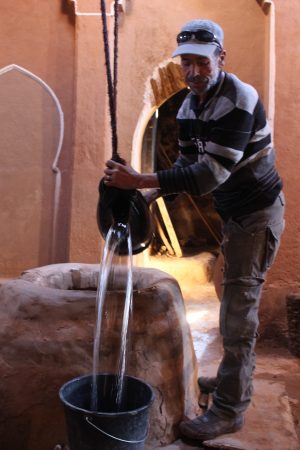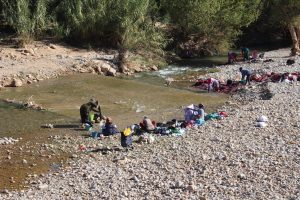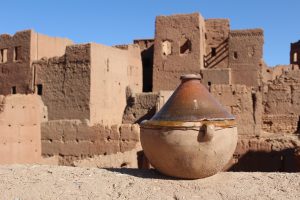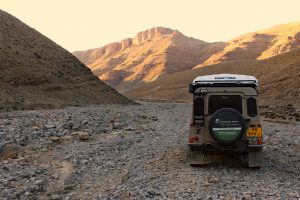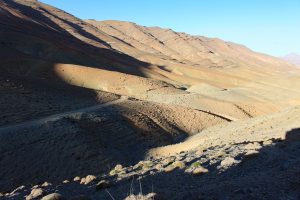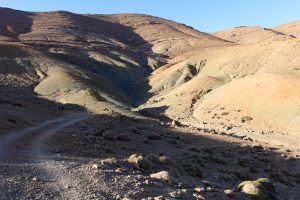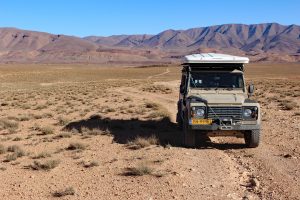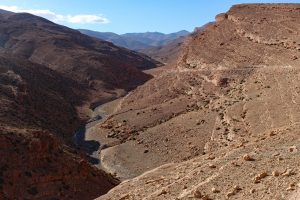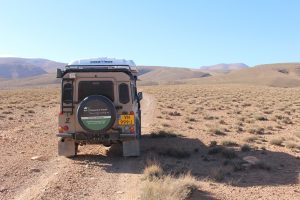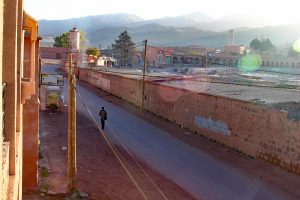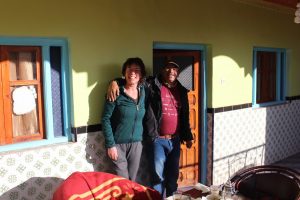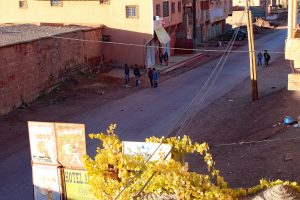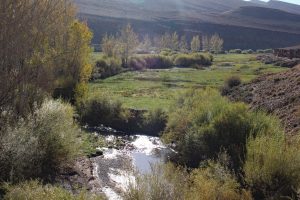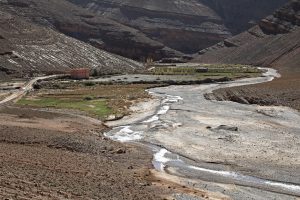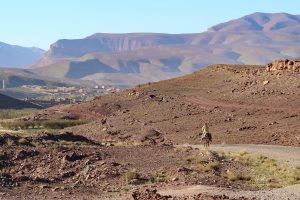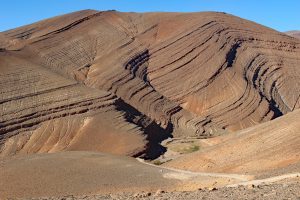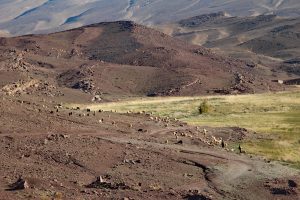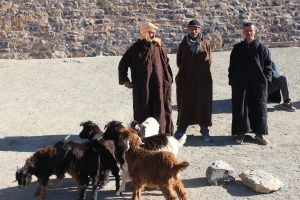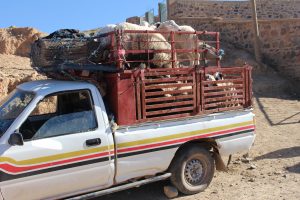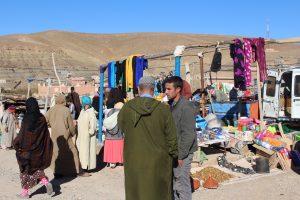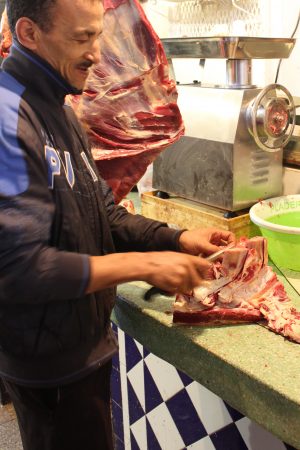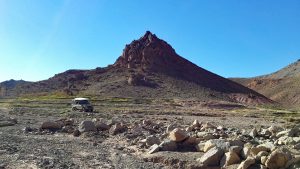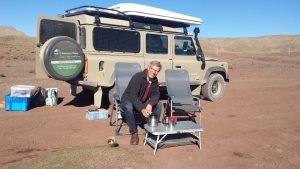Discovering the unexpected
In November 2016 we did our first roaming tour of Morocco: 14 days of which only the first four were planned. For the remaining 10 days we had a number of things we wanted to see, without a fixed itinerary or planned overnight stays. Our clients had said they wanted to learn how Moroccans live; they wanted to drive through the desert and sand dunes, while the Atlas mountains were also very attractive.
Tetouan
We spent the first of our four planned days in Tetouan, a nice place with an unspoilt medina, as yet not much discovered by tourists. We were in a beautiful hotel, El Reducto, a riad in a tiny ally right in the centre of town, with a wonderful atmosphere.
Its terrace offers great views over the town and the Rif mountains in the background.
Like every old town in Morocco, Tetouan has got a medina, a maze of alleys with small shops, craftsmen, traders in livestock, mosques, bath houses – and lots of people.
At the edge of the medina there is a tannery which, though a lot smaller than the famous one in Fes, is interesting because you can walk into it and come up close, making you realise how hard the work in such places is.
Chefchaouen
From Tetouan we went on to Chefchaouen, very different in atmosphere. This has been discovered by tourists – its maze of allies painted in attractive blue and white, its prosperous looks making you feel not too guilty about your own prosperity, its manageable size all combine to make the tourist feel comfortable. Chefchaouen is truly worth a visit, especially if you go outside the tourist season as we do and if you stay in the wonderful hotel Alkhalifa, where the sheep stand right next to your window and you have a perfect view over the town.
Volubilis
After picturesque Chefchaouen, we headed in the direction of Volubilis. We took a track through the mountains, where hardly a foreign vehicle comes, so were much stared at by the locals, who were clearly wondering what on earth brought us there. We had lunch between the marihuana plants.
Volubilis is the site of the most southern town of the Roman empire. At this time of day the light was beautiful. We parked near the ruins, went through a hole in the fence and just wandered around until a guard came up to us saying we still had to pay our entrance fee. Which we duly handed over and for which we were rewarded with a guided tour. We paid him a little extra, of course, because that’s the way things work in Morocco.
Meknes
We drove on to Meknes, the smallest of the four Imperial Cities. Here we stayed in another wonderful hotel, the Riad Lahboul, comfortable, hospitable, excellent breakfast.
Meknes is very lively, with an attractive medina and a great many interesting building. This is not in the least thanks to Moulay Idriss, who, to his own greater glory, erected a vast palace, gateways into the city and the central square. The square is called The Square of Destruction because it was filled with the rubble of the houses he had torn down to make room for his palace.
Plain of Rekham
After all this high culture, it was time to head into the country. We decided to go east to Debdou and then south, across the Plain of Rekham to Boudnib. The road to Debdou was on tarmac and not terribly interesting. Just beyond this little town, however, we climbed on top of the plain, at an altitude of about 1400 meters, where the tarmac changed into a track. As it was getting dark, we set up camp a few hundred meters from the main road, with fantastic views over the area around us.
The next day we drove south over the plain. This is the Moroccan desert.
We camped once more in the wild in a dry river bed.
The next day we reached the campsite near Boudnib, run by a French couple. It is excellent!
To Erg Chebbi
The road to Erg Chebbi from Boudnib is beautiful. We pass an oasis, a little stream and, as we get further south, sand is slowly taking over the rocky desert.
The dunes of Erg Chebbi are famous. They conform completely to our cliché picture of the Sahara Desert: sand wherever you look. The light in the morning and evening is beautiful. It’s fun to drive through, though not without risk. You get stuck easily and going over the edge of a dune can be a hairy experience: if you haven’t done a reccce first (most people haven’t), you don’t know what’s at the other side and may be in for quite a surprise. The best thing to do is to hire a local guide who rides in front of you on his moped. And have a swim afterwards in our comfortable hotel.
Tinghir
Tinghir is a small town at the south side of the High Atlas Mountains. It is notable for its large oasis with palm trees, figs, pomegranates and olives. The old clay town is charming and well worth a visit.
From Tinghir the road leads north into the Gorge du Todra into the High Atlas.
Into the Atlas Mountains
The road winds through the beautiful landscape of the Gorge du Todra.
From the Gorge du Todra to the Gorge des Dades
There is a fantastic track leading from the Gorge du Todra to the more famous Gorge des Dades. Starting just north of Tamtatouchte, it leads over a mountain ridge down into a valley with a dry river bed. At first the going is easy, with great views, and then suddenly the track stops. You have to drive into the river bed and find your way. Interesting!
Gorge des Dades and Imilchil
We stayed overnight in a M’Semrir, in Hotel Aït, where we were treated to Moroccan hospitality.
The next day we set off for Imilchil, north through the Dades Valley.
We were lucky to be travelling on a Thursday, when there is a lively soukh in Iznaguen, a village some 30 kms north of M’Semrir. Here the production cycle from live animal to meat on the counter is a matter of minutes and a few hundred meters.
Towards sunset we reached the two lakes near Imilchil, Tislite and Isli (bride and bridgroom). The origin of these lakes goes back to the time when a girl from the Aït-Yassa tribe was not allowed to marry a boy from the AÏt-Brahims. The two lovers cried so hard, that the two lakes formed in the mountains. The beauty of their love shines through in the beauty of these lakes.
Imilchil lies at an altitude of 2120 mtr. It is often cold and today was no exception. We stayed in a hotel as the only guests. In the morning you could see the frost over the fields.
 English
English Deutsch
Deutsch